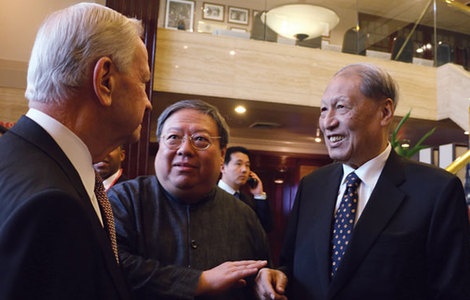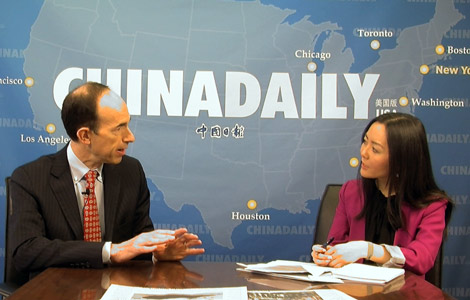World Bank cuts China growth forecast
Updated: 2014-10-07 03:27
(Agencies in Singapore)
|
||||||||
2014 target revised to 7.4 percent, with 7.2 percent for 2015
The World Bank said on Monday in Singapore that it has cut its growth target forecast for China to 7.4 percent in 2014 and 7.2 percent in 2015, as the country pushes forward reforms to address financial vulnerabilities and structural constraints.
"Measures to contain local government debt, curb shadow banking and tackle excess capacity, high energy demand and high pollution will reduce investment and manufacturing output," it said.
Sudhir Shetty, chief economist for the World Bank's East Asia and Pacific region, said the situation was not negative.
"China's slowdown in economy will be gradual; it's not the bottom falling out of China's growth," Shetty said, adding that it will not have a dramatic impact on other countries.
"The main message of this report is one that I would categorize as cautious optimism," Shetty said.
Possible risks include a weaker-than-expected recovery in global trade and any abrupt rise in global interest rates, the report said, noting that its baseline scenario was based on an orderly normalization of monetary policy in the United States.
However, it said that if China experiences a sharp slowdown, which is unlikely to happen, it would hit commodity producers in the region especially hard - metal exporters in Mongolia and coal exporters in Indonesia, for example.
Overall, developing countries in the East Asia Pacific region will grow by 6.9 percent in 2014 and 2015, down from the 7.1 percent rate the bank had previously forecast, and also a slowdown from 2013's 7.2 percent.
The bank also adjusted its 2016 growth forecast for the region from 7.1 percent to 6.8 percent.
Even so, it highlighted that the developing East Asia Pacific remains the fastest growing region in the world.
Looking ahead, the bank said the best way for countries in the region to deal with risks is to address vulnerabilities and inefficiencies caused by an extended period of loose monetary policy and fiscal stimulus, and complement these measures with structural reforms to enhance export competitiveness.
Key reform areas include infrastructure investment, logistics, and the liberalization of services and foreign direct investment, it said.
Regarding China's outlook, it said structural reforms in sectors such as State enterprises and services could help "offset the impact of measures to contain local government debt and curb shadow banking".
As to the property market, the bank said that "a major nationwide correction in real estate prices in China remains unlikely, although there may be pressure on prices in several of the less rapidly growing provinces".
China's economy has struggled to recover from a soft start this year when growth slowed to its weakest in 18 months in the first quarter.
Beijing has indicated it is prepared to accept slower growth as it tries to wean the world's second-biggest economy away from dependence on investment and exports in favor of consumption. But a slowdown in the housing market has become an increasing drag on the broader economy, prompting governments at different levels to step up efforts to restore momentum.
Xinhua-Reuters
- World Bank lowers China 2014 growth forecast to 7.4%
- $200m to help with Ebola epidemic: World Bank
- World Bank head says new entrants 'will be welcome'
- World Bank chief eyes cooperation with AIIB
- China's growth moderates amid rebalancing: World Bank
- Former World Bank chief calls for greater China engagement in int'l institutions
- World Bank pares 2014 outlook
- World Bank to bolster fight on poverty, inequality
Most Viewed
Editor's Picks

|

|

|

|

|

|
Today's Top News
HK occupiers urged to reflect on campaign
Big believer in real estate now a skeptic due to sluggish sales
WB cuts China growth forecast
World Bank weighs protest's economic impact
162,629 'phantom' staffers taken off govt payrolls
Holiday tourism fever continues
Smog, fog to shroud China
Services growth hits 8-month low
US Weekly

|

|















